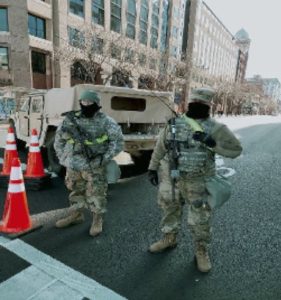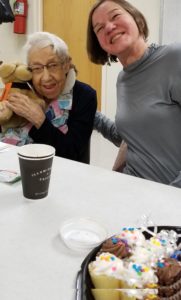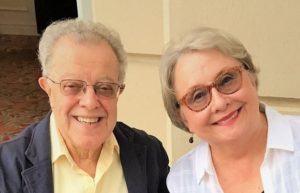Saturdays with Seniors: Howard’s Life in the Green Zone
January 30, 2021 • 7 Comments • Posted in guest blog, politics, radio, writingI am pleased to feature Howard Marks as our Saturdays with Seniors guest blogger today. After graduating from the University of Illinois-Chicago (and serving as editor-in-chief of the student newspaper) he worked at the Chicago Today and the Chicago Tribune and received a Master’s Degree in Journalism from Northwestern University. Semi-retired in Washington, D.C. now, Howard participates in our memoir-writing classes via Zoom. How fortunate to have him in class to share this first-person account on life in D.C. this past month.
by Howard S. Marks
This would have been my twelfth Presidential Inauguration since I moved to Washington, DC in 1975. My first was the swearing-in of former Georgia governor Jimmy Carter as the 39th President of the United States. President Carter’s inauguration would be the last one on the east front of the Capitol Building.
President Reagan changed all that four years later. Now new and re-elected Presidents are sworn-in on the west front of the Capitol facing towards the American frontier. The swearing-in of Illinois Senator Barack Obama in 2009 as the first president of color was the most exciting, with an estimated 1.8 million people attending.
We already knew the 2021 inauguration of former Vice President Joe Biden would be different. Washington, DC was racked by civil unrest during the summer, the nation was in the midst of pandemic, and President Trump wanted to overturn the results of the November election.
And then, with the inauguration just weeks away, the unthinkable occurred. The U.S. Capitol Building, the hallowed icon of American democracy, was attacked by a mob resulting in at least two deaths and numerous injuries.
Living midway between the U.S. Capitol and the White House, my wife Sandy and I found ourselves in the newly declared “Green Zone.” Set up by the U.S. Secret Service, the Green Zone was the outer layer of security – the “Red Zone” was two blocks closer to the National Mall.
An eight-foot-high temporary fence was erected, and hundreds of Jersey concrete barriers were set up to block all traffic. The National Mall became off-limits with no visitors allowed.
Life in the Green Zone was out of a stage set. Pedestrians and cyclists were allowed to roam freely, but streets were devoid of cars (drivers were required to prove they were on official business or were residents in order to enter). The usually bustling Metrorail station below our condo building was closed, as were all other downtown stations.
Pennsylvania National Guardsmen with M-4 rifles at the ready were there to staff nearby checkpoints. Twenty-five thousand guardsmen were here from all 50 states and three U.S. territories. Metropolitan Police were on 12-hour shifts. None were allowed to take leaves.
Bridges to the Virginia suburbs were closed, too, blocking access to airports. Downtown garages inside the red zone were closed.
Back in the Green Zone, our garage remained open, but only for monthly parkers like us. Most stores were closed. Restaurants were open for take-out, and food stores were open as well.
The day before the inauguration, reporters from French National Radio interviewed me while I was out walking the dog. I had to escort the late-night concierge for our building out of the green zone so he could get a shared-ride service home. On inauguration day I distributed Nature Bakery raspberry and blueberry fig bars to members of the Pennsylvania National Guard (young men from Central and Northwest Pennsylvania). They were very grateful.
The barriers came down two days after the inauguration, but the memory of a capital city and a nation under siege will endure forever in the annals of American history.





